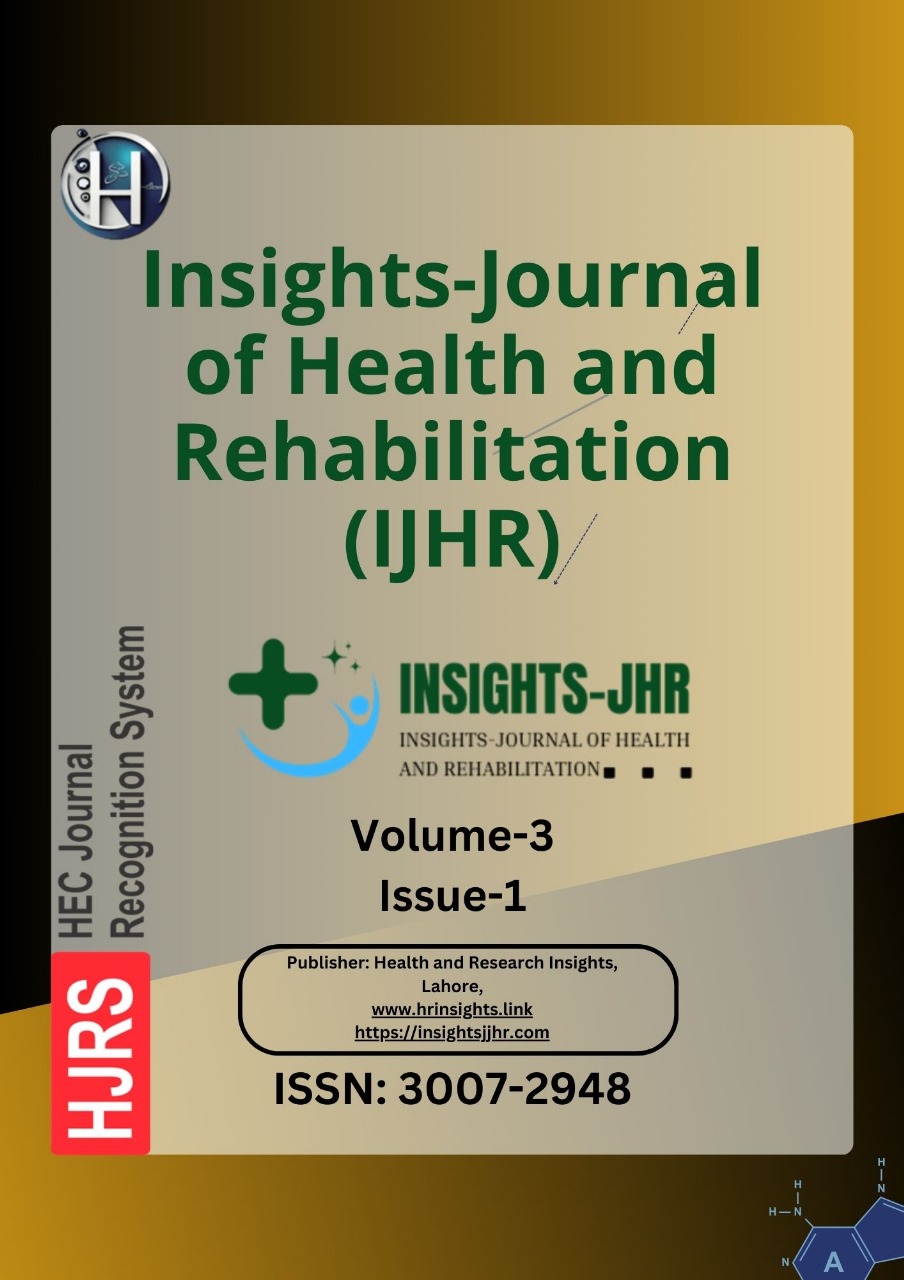ASSOCIATION BETWEEN OVERHEAD ATHLETIC ACTIVITIES AND SHOULDER IMPINGEMENT SYNDROME AMONG UNIVERSITY ATHLETES
DOI:
https://doi.org/10.71000/cp161d79Keywords:
Biomechanical Risk Factors, Occupational Health, Overhead Activities, Rehabilitation Exercises, Rotator Cuff Dysfunction, Shoulder Impingement Syndrome, Sports InjuriesAbstract
Background: Shoulder impingement syndrome (SIS) is a prevalent musculoskeletal disorder affecting individuals engaged in repetitive overhead activities, particularly athletes and workers exposed to prolonged arm elevation. It is characterized by mechanical compression of the rotator cuff tendons and subacromial structures, leading to pain, restricted mobility, and functional impairment. The condition is influenced by biomechanical risk factors, including scapular dyskinesis, rotator cuff weakness, and reduced shoulder rotation. Understanding its prevalence and risk factors is essential for developing effective prevention and management strategies.
Objective: This study aimed to determine the prevalence, severity, and risk factors associated with SIS in individuals engaged in repetitive overhead activities. Additionally, it sought to compare findings with existing literature to identify effective prevention and rehabilitation strategies.
Methods: A cross-sectional study was conducted on 200 university athletes aged 18 to 25 years, selected through purposive sampling. Participants underwent clinical assessments, including the Neer Impingement and Hawkins-Kennedy tests, to diagnose SIS. Pain severity was measured using a self-reported numerical scale. Descriptive statistics were used to analyze prevalence, while Spearman’s correlation assessed associations between SIS and biomechanical risk factors. Comparative analysis was performed with previously reported SIS cases in occupational and sports settings.
Results: Findings revealed that 61% of participants tested positive for SIS, with 43% reporting moderate to severe pain. Among those experiencing discomfort, 15% had mild pain, 31% had moderate pain, and 12% reported severe pain. Pain during the Neer Impingement Test was present in 61% of participants, with 26% reporting moderate pain and 13% experiencing severe pain. Statistical analysis indicated no significant correlation between pain presence and severity (p>0.05).
Conclusion: This study reinforces the strong association between repetitive overhead movements and SIS, emphasizing the need for early screening, structured rehabilitation, and ergonomic interventions to reduce SIS burden. Future research should explore longitudinal studies, genetic predispositions, and alternative treatment approaches to enhance SIS management strategies.
Downloads
Published
Issue
Section
License
Copyright (c) 2025 Fatima Israr Khan, Komal Naveed, Maryam Zahra, Shumaila Mehdi, Mobeen Ghulam Ahmed, Malik Hassan Mehmood, Zeeshan Javed, Faraha Naveed (Author)

This work is licensed under a Creative Commons Attribution-NonCommercial-NoDerivatives 4.0 International License.







